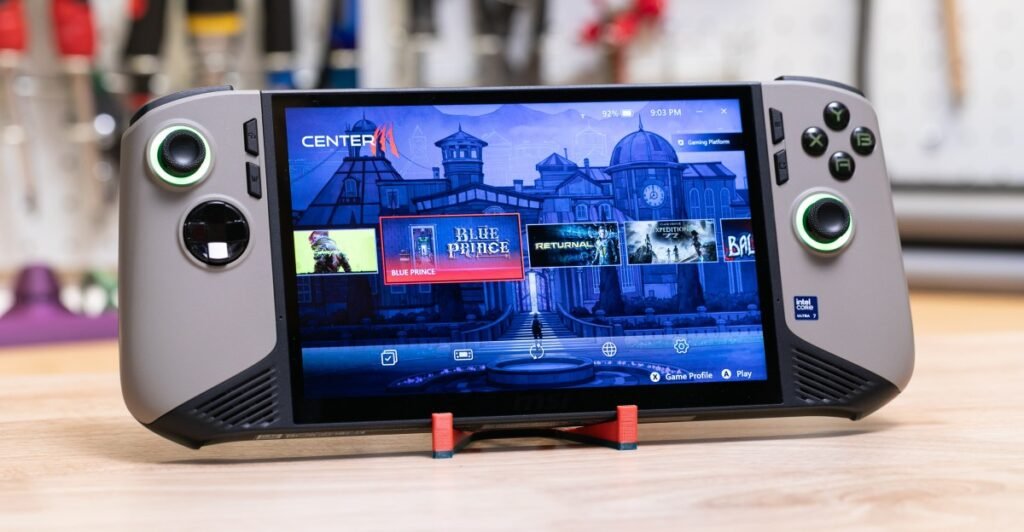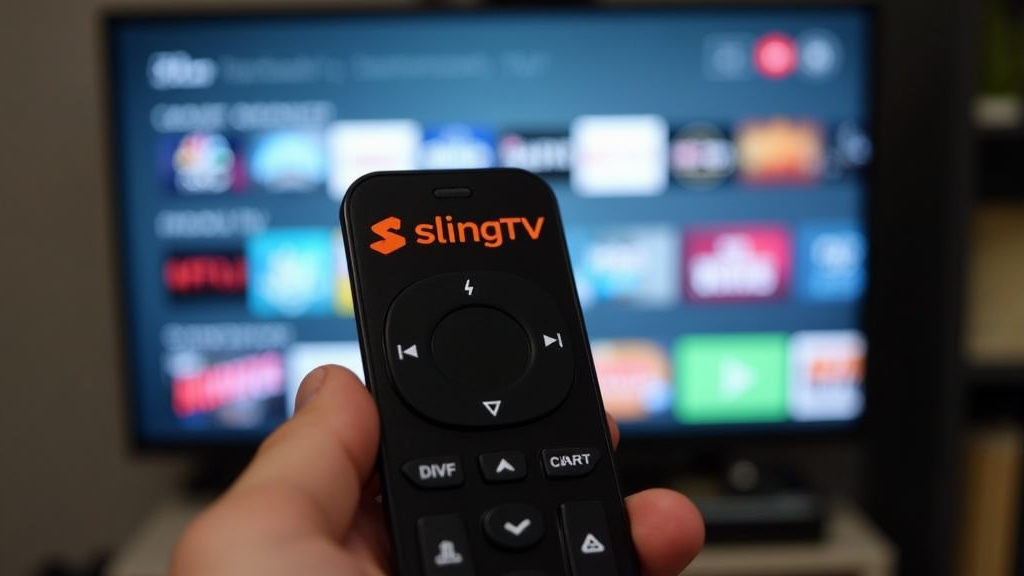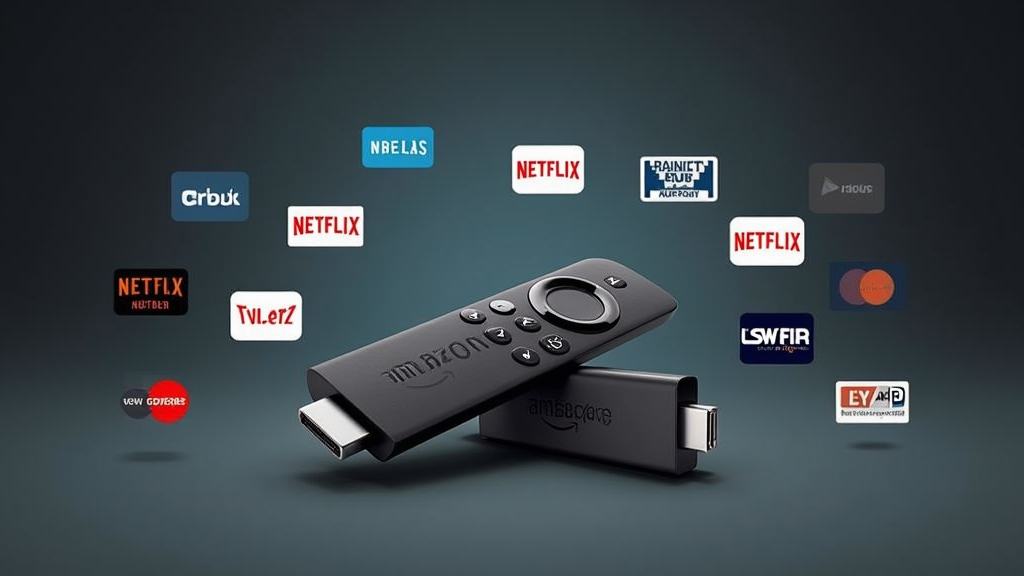I wrote that no one should buy MSI and Intel’s original handheld gaming PC. I literally called it an embarrassment, and the company blacklisted me after that. MSI stopped pitching me news, and stopped answering my emails, even after the company began to write off its dud of a handheld.
So you can imagine my surprise to find: MSI and Intel have gone from worst to nearly first. In many games, it’s twice as fast as the original Claw. And with new drivers that bump its performance up to 30 percent higher since launch — I tested — the newer $1,000 MSI Claw 8 AI Plus might just be the best Windows handheld you can buy.
The Claw 8 has become a fixture in my life as I carve and puzzle through the hauntingly beautiful painted worlds of Clair Obscur: Expedition 33 and Blue Prince, respectively. I have a lot of other handheld review units floating around, but I rarely want to reach for a different one.

Yes, it runs Windows, and if you’ve read any of my handheld reviews you’ll know how I feel about that. Windows 11 has become a bloated mess filled with annoying upsells and unwanted AI cruft, is annoying to navigate by controller alone, and often wakes up poorly from sleep. I can’t count the number of times I’ve sworn at Windows handhelds for popping awake in the middle of the night, or spontaneously deciding it was time to turn their remaining battery life into hot exhaust in the middle of my sealed backpack.
But the MSI Claw 8, with Intel’s Lunar Lake, isn’t as bad as the Windows norm. When you combine that with the newly improved performance, the longest battery life of any handheld in all but the most lightweight games, and an excellent 8-inch 120Hz VRR screen, it’s enough to knock the Asus ROG Ally X off its high perch — at least until the Xbox version arrives this October.


$999
The Good
- Best battery life in a handheld
- Excellent performance after updates
- Great variable refresh rate screen
- Fewer Windows annoyances than usual
The Bad
- $1,000
- Windows is bloated and can’t be trusted to sleep
- Iffy rumble for games
- AI tuning feature doesn’t work well
The MSI Claw 8 AI Plus is the biggest mainstream handheld, at nearly a foot long, 5 inches tall, and an inch thick, and it’s the only current-gen handheld with an Intel chip. Last year, both size and Intel pedigree were liabilities — but thankfully every handheld maker is paying more attention to ergonomics this year, and Intel’s Lunar Lake is a big improvement.
Scalloped grips and balanced weight distribution make the Claw comfortable for me to hold, it no longer looks like a ROG Ally knockoff, and while it isn’t light at 1.75 pounds (795g), that’s only a quarter-pound heavier than the Ally X. That’s despite the Claw having an extra inch of diagonal screen real estate and the same 80 watt-hour battery capacity as Asus.


I honestly found it tough to go back to playing Expedition 33 on the Asus ROG Ally X after using the Claw 8, partially because its 8-inch 120Hz 1920 x 1200 VRR IPS screen is more colorful and more spacious (with a far smaller bezel), and partially because the game ran smoother. (I beat the game, including the entire Endless Tower and four of the game’s toughest boss fights, on the Claw 8.)
But before all that, I had to tangle with Windows 11 — and was surprised how little detangling was needed.
The first time I fired up the MSI Claw 8 AI Plus, I couldn’t believe how fast Windows setup had become. Instead of the typical 45 minutes of annoying upsells and mandatory updates, I was able to get to the Windows desktop just seven minutes after I pressed the power button.

That’s still slower than setting up a SteamOS handheld, but fast enough I thought there must be some mistake! (Did this really get past Microsoft certification?) Another curiosity: When I hit the button that pulls up the Claw’s quick settings menu to adjust brightness, volume, and my processor’s TDP (giving it more wattage/gas), it launched a new widget in the Xbox Game Bar with those handy controls instead of a dedicated MSI process! Did somebody accidentally slip me a preview of Microsoft’s “best of Xbox and Windows together” that’ll ship on the Xbox Ally later this year?
But I won’t lie and say the Windows experience was flawless after that. MSI’s Game Bar widget turned out to be incredibly sluggish and unreliable out of the box. It got better after I changed the Windows power mode from “Balanced” to “Best Performance,” but it still isn’t nearly as fast as Asus’ Armory Crate, which has gotten extremely responsive since the Ally first launched, or as reliable as SteamOS, which doesn’t require a separate utility at all.
Here’s how much MSI has improved:
Game and power mode |
MSI Claw 8 AI Plus (Aug ’25) |
MSI Claw 8 AI Plus (Jun ’25) |
Claw 8 3-mo improvement |
Claw battery drain (August) |
Claw battery drain (June) |
Claw 7 (Meteor Lake, Jun ’24) |
Claw 8 Lunar Lake vs. Claw 7 Meteor Lake |
|---|---|---|---|---|---|---|---|
| AC Valhalla, 15-watt TDP | 66 | 49 | 34.69% | 20.5W (~3.9h) | 23W (~3.5h) | N/A | N/A |
| 20-watt TDP | 78 | 59 | 32.20% | 25.5W (~3.1h) | 29W (~2.8h) | 33 | 136.36% |
| 25-watt TDP | 84 | 69 | 21.74% | 32W (~2.5h) | 36W (~2.2h) | 53 | 58.49% |
| 30-watt TDP | 85 | 79 | 7.59% | 38W (~2.1h) | 39.5W (~2h) | 54 | 57.41% |
| Plugged in | 86 | 83 | 3.61% | N/A | N/A | 54 | 59.26% |
| Cyberpunk 2077, 15-watt TDP | 51 | 48 | 6.25% | 20W (~4h) | 20.5W (~3.9h) | N/A | N/A |
| 20-watt TDP | 60 | 57 | 5.26% | 25W (~3.2h) | 26W (~3.1h) | 32 | 87.50% |
| 25-watt TDP | 71 | 65 | 9.23% | 31.5W (~2.5h) | 31.5W (~2.5h) | 49 | 44.90% |
| 30-watt TDP | 76 | 72 | 5.56% | 37.5W (~2.1h) | 37W (~2.2h) | 41 | 85.37% |
| Plugged in | 77 | 79 | -2.53% | N/A | N/A | 49 | 57.14% |
| DX: Mankind Divided, 15-watt TDP | 79 | 66 | 19.70% | 22.5W (~3.6h) | 21.5W (~3.6h) | N/A | N/A |
| 20-watt TDP | 93 | 81 | 14.81% | 29.5W (~2.7h) | 27W (~3h) | 45 | 106.67% |
| 25-watt TDP | 105 | 91 | 15.38% | 31W (~2.6h) | 32W (~2.5h) | 49 | 114.29% |
| 30-watt TDP | 114 | 100 | 14.00% | 37W (~2.2h) | 37W (~2.2h) | 48 | 137.50% |
| Plugged in | 119 | 107 | 11.21% | N/A | N/A | 58 | 105.17% |
| Returnal, 15-watt TDP | 40 | 30 | 33.33% | 20W (~4h) | 22W (~3.6h) | N/A | N/A |
| 20-watt TDP | 48 | 36 | 33.33% | 26.5W (~3h) | 27W (~3h) | 29 | 65.52% |
| 25-watt TDP | 52 | 41 | 26.83% | 36W (~2.2h) | 32W (~2.5h) | 38 | 36.84% |
| 30-watt TDP | 54 | 43 | 25.58% | 42.5W (~1.9h) | 37.5W (~2.1h) | 39 | 38.46% |
| Plugged in | 56 | 44 | 27.27% | N/A | N/A | 37 | 51.35% |
| Shadow of the Tomb Raider, 15-watt TDP | 55 | 51 | 7.84% | 21W (~3.8h) | 23W (~3.5h) | N/A | N/A |
| 20-watt TDP | 66 | 60 | 10.00% | 27W (~3h) | 30W (~2.6h) | 32 | 106.25% |
| 25-watt TDP | 73 | 68 | 7.35% | 35W (~2.3h) | 35.5W (~2.2h) | 38 | 92.11% |
| 30-watt TDP | 81 | 74 | 9.46% | 42W (~1.9h) | 41W (~2h) | 39 | 107.69% |
| Plugged in | 81 | 75 | 8.00% | N/A | N/A | 42 | 92.86% |
| HZD Remastered, 15-watt TDP | 31 | 31 | 0.00% | 21.5W (~3.6h) | 24.5W (~3.3h) | N/A | N/A |
| 20-watt TDP | 37 | 37 | 0.00% | 28W (~2.9h) | 30W (~2.6h) | Did not test | N/A |
| 25-watt TDP | 42 | 41 | 2.44% | 34.5W (~2.3h) | 36W (~2.2h) | Did not test | N/A |
| 30-watt TDP | 44 | 42 | 4.76% | 40W (~2h) | 39W (~2.1h) | Did not test | N/A |
| Plugged in | 46 | 45 | 2.22% | N/A | N/A | Did not test | N/A |
And no, I can never, ever trust the Claw 8’s power button to keep it asleep. I always have to explicitly put the system into hibernation mode instead, which is thankfully the first option in that Game Bar widget. (Microsoft really needs to get out of its own way and let manufacturers set the power button to hibernate instead of Modern Standby.)
It’s also a little frustrating to go back to a world where I have to manually download the latest Intel graphics drivers because they never showed up in MSI Center’s updates tab. But once I installed those new graphics drivers and learned to avoid the power button, I was rewarded with some of the highest performance and the best battery life I’ve seen from a handheld yet. It’s just better at the whole turbo mode thing, with higher frame rates and higher TDP options than the Ally X with Windows, and it’s more power-efficient than the SteamOS Lenovo Legion Go S, even if Lenovo’s Steam handheld got higher frame rates in half my benchmarks.
Claw 8 vs. Ally X vs. Legion Go S vs. Steam Deck performance
Game and power mode |
Claw 8 fps |
ROG Ally X (Windows, Z1E) fps |
Legion Go S (SteamOS, Z1E) fps |
Steam Deck OLED fps |
Claw 8 vs. Ally X |
Claw 8 vs. Legion Go S |
Claw 8 vs. Deck |
|---|---|---|---|---|---|---|---|
| AC Valhalla, 15-watt TDP | 66 | 52 | 66 | 57 | 26.92% | 0.00% | 15.79% |
| 20-watt TDP | 78 | 71 | 84 | N/A | 9.86% | -7.14% | N/A |
| 25-watt TDP | 84 | 80 | 92 | N/A | 5.00% | -8.70% | N/A |
| 30-watt TDP | 85 | 89 | 96 | N/A | -4.49% | -11.46% | N/A |
| Plugged in | 86 | 89 | 92 | 57 | -3.37% | -6.52% | 50.88% |
| Cyberpunk 2077, 15-watt TDP | 51 | 41 | 57 | 50 | 24.39% | -10.53% | 2.00% |
| 20-watt TDP | 60 | 59 | 73 | N/A | 1.69% | -17.81% | N/A |
| 25-watt TDP | 71 | 65 | 79 | N/A | 9.23% | -10.13% | N/A |
| 30-watt TDP | 76 | 71 | 82 | N/A | 7.04% | -7.32% | N/A |
| Plugged in | 77 | 71 | 86 | 50 | 8.45% | -10.47% | 54.00% |
| DX: Mankind Divided, 15-watt TDP | 79 | 59 | 74 | 61 | 33.90% | 6.76% | 29.51% |
| 20-watt TDP | 93 | 84 | 92 | N/A | 10.71% | 1.09% | N/A |
| 25-watt TDP | 105 | 91 | 99 | N/A | 15.38% | 6.06% | N/A |
| 30-watt TDP | 114 | 93 | 100 | N/A | 22.58% | 14.00% | N/A |
| Plugged in | 119 | 93 | 102 | 61 | 27.96% | 16.67% | 95.08% |
| Returnal, 15-watt TDP | 40 | 31 | 24 | 25 | 29.03% | 66.67% | 60.00% |
| 20-watt TDP | 48 | 40 | 30 | N/A | 20.00% | 60.00% | N/A |
| 25-watt TDP | 52 | 43 | 32 | N/A | 20.93% | 62.50% | N/A |
| 30-watt TDP | 54 | 46 | 33 | N/A | 17.39% | 63.64% | N/A |
| Plugged in | 56 | 46 | 34 | 25 | 21.74% | 64.71% | 124.00% |
| Shadow of the Tomb Raider, 15-watt TDP | 55 | 52 | 62 | 57 | 5.77% | -11.29% | -3.51% |
| 20-watt TDP | 66 | 65 | 83 | N/A | 1.54% | -20.48% | N/A |
| 25-watt TDP | 73 | 70 | 89 | N/A | 4.29% | -17.98% | N/A |
| 30-watt TDP | 81 | 76 | 93 | N/A | 6.58% | -12.90% | N/A |
| Plugged in | 81 | 76 | 96 | 57 | 6.58% | -15.63% | 42.11% |
| HZD Remastered, 15-watt TDP | 31 | 28 | 37 | 33 | 10.71% | -16.22% | -6.06% |
| 20-watt TDP | 37 | 30 | 47 | N/A | 23.33% | -21.28% | N/A |
| 25-watt TDP | 42 | 28 | 50 | N/A | 50.00% | -16.00% | N/A |
| 30-watt TDP | 44 | 34 | 52 | N/A | 29.41% | -15.38% | N/A |
| Plugged in | 46 | 34 | 55 | 33 | 35.29% | -16.36% | 39.39% |
We’re not talking about a step change in performance here: this pricy $1,000 handheld still doesn’t have near the frame rate of a similarly priced gaming laptop. It’s just enough extra power to make games feel smooth on this handheld that were borderline choppy on its peers, like Expedition 33 (even then, these handhelds need AI upscaling to get there).
But I didn’t have to sacrifice battery life to get that extra power. I often even push the Claw 8’s chip to 30 watts, a power mode that the Asus ROG Ally X doesn’t offer unless plugged in, for an extra frame rate advantage — while getting roughly the same battery life as the Ally X gets at its 25W unplugged maximum.

And though the Steam Deck has long reigned as the efficiency champ, I found the Claw 8 can even beat the Steam Deck on both performance and power use when set to the same 15-watt TDP, often draining its battery 2 or even 3 watts slower. When you combine that with its big 80-watt-hour pack, it handily beat competitors in my Dirt Rally drain test, lasting nearly 19 minutes longer than the Asus ROG Ally X with Bazzite, 28 minutes longer than the Steam Deck OLED, and 80 minutes longer than the Legion Go S with SteamOS and AMD’s Z1 Extreme chip.
Below, you can see how battery life might compare at each performance tier. For example: the Claw 8 and Legion Go S with SteamOS both offer the same 66 frames per second when you offer their chips 15 watts of electricity, but you’ll probably get 3.9 hours of battery from the Claw versus 2.3 hours from the Legion. That’s because MSI’s Intel chip is drawing less power from a larger battery.
Battery life vs. performance
Game and power mode |
Claw 8 fps |
Claw battery drain |
ROG Ally X (Windows, Z1E) fps |
Ally X battery drain |
Legion Go S (SteamOS, Z1E) fps |
Legion Go S battery drain |
Steam Deck OLED fps |
Deck battery drain |
|---|---|---|---|---|---|---|---|---|
| AC Valhalla, 15-watt TDP | 66 | 20.5W (~3.9h) | 52 | 24W (~3.3h) | 66 | 24W (~2.3h) | 57 | 23.5W (~2.1h) |
| 20-watt TDP | 78 | 25.5W (~3.1h) | 71 | 30W (~2.6h) | 84 | 30.5W (~1.8h) | N/A | N/A |
| 25-watt TDP | 84 | 32W (~2.5h) | 80 | 36W (~2.2h) | 92 | 36W (~1.5h) | N/A | N/A |
| 30-watt TDP | 85 | 38W (~2.1h) | 89 | N/A | 96 | 43.5W (~1.3h) | N/A | N/A |
| Cyberpunk 2077, 15-watt TDP | 51 | 20W (~4h) | 41 | 22W (~3.6h) | 57 | 25W (~2.2h) | 50 | 23.5W (~2.1h) |
| 20-watt TDP | 60 | 25W (~3.2h) | 59 | 29W (~2.7h) | 73 | 32W (~1.7h) | N/A | N/A |
| 25-watt TDP | 71 | 31.5W (~2.5h) | 65 | 35W (~2.2h) | 79 | 38W (~1.4h) | N/A | N/A |
| 30-watt TDP | 76 | 37.5W (~2.1h) | 71 | N/A | 82 | 44.5W (~1.2h) | N/A | N/A |
| DX: Mankind Divided, 15-watt TDP | 79 | 22.5W (~3.6h) | 59 | 22W (~3.6h) | 74 | 25.5W (~2.2h) | 61 | 22W (~2.2h) |
| 20-watt TDP | 93 | 29.5W (~2.7h) | 84 | 30W (~2.6h) | 92 | 32W (~1.7h) | N/A | N/A |
| 25-watt TDP | 105 | 31W (~2.6h) | 91 | 36W (~2.2h) | 99 | 38.5W (~1.4h) | N/A | N/A |
| 30-watt TDP | 114 | 37W (~2.2h) | 93 | N/A | 100 | 45W (~1.2h) | N/A | N/A |
| Returnal, 15-watt TDP | 40 | 20W (~4h) | 31 | 23W (~3.5h) | 24 | 25.5W (~2.2h) | 25 | 23W (~2.1h) |
| 20-watt TDP | 48 | 26.5W (~3h) | 40 | 30W (~2.6h) | 30 | 32W (~1.7h) | N/A | N/A |
| 25-watt TDP | 52 | 36W (~2.2h) | 43 | 36W (~2.2h) | 32 | 38.5W (~1.4h) | N/A | N/A |
| 30-watt TDP | 54 | 42.5W (~1.9h) | 46 | N/A | 33 | 45.5W (~1.2h) | N/A | N/A |
| Shadow of the Tomb Raider, 15-watt TDP | 55 | 21W (~3.8h) | 52 | 23W (~3.5h) | 62 | 25W (~2.2h) | 57 | 23.5W (~2.1h) |
| 20-watt TDP | 66 | 27W (~3h) | 65 | 30W (~2.6h) | 83 | 31.5W (~1.7h) | N/A | N/A |
| 25-watt TDP | 73 | 35W (~2.3h) | 70 | 36W (~2.2h) | 89 | 37.5W (~1.5h) | N/A | N/A |
| 30-watt TDP | 81 | 42W (~1.9h) | 76 | N/A | 93 | 43.5W (~1.3h) | N/A | N/A |
| HZD Remastered, 15-watt TDP | 31 | 21.5W (~3.6h) | 28 | 23W (~3.5h) | 37 | 25W (~2.2h) | 33 | 23W (~2.1h) |
| 20-watt TDP | 37 | 28W (~2.9h) | 30 | 30W (~2.6h) | 47 | 32W (~1.7h) | N/A | N/A |
| 25-watt TDP | 42 | 34.5W (~2.3h) | 28 | 36W (~2.2h) | 50 | 37.5W (~1.5h) | N/A | N/A |
| 30-watt TDP | 44 | 40W (~2h) | 34 | N/A | 52 | 44W (~1.3h) | N/A | N/A |
All this said, you still can’t ease off the gas quite like with AMD chips, at least not out of the box. Officially, the Intel Core Ultra 7 258V is a 17W–37W chip, and while MSI lets you set the chip’s TDP as low as 8 watts, I still saw the Claw empty my battery at a rate of at least 11W in Balatro, the magic poker game I use as my best-case-scenario test. That means at minimum screen brightness, with wireless off, I’m getting around seven hours max — whereas the Steam Deck OLED can get nine hours and the Asus ROG Ally X can manage 10 in such lightweight games.
I have some quibbles with the Claw’s hardware. Though the speakers are above average, the rumble is annoying and weak. Hall effect joysticks and dedicated gyro modes are nice, but aiming felt sloppy out of the box, like MSI didn’t bother tuning either to a console controller standard, and I still haven’t quite nailed it with tweaks in either individual game settings or MSI Center. It’s also not the fastest handheld to charge or download games, despite its two Thunderbolt 4 ports and Wi-Fi 7, though not slow either.
But the real hurdles for the Claw 8 are that $1,000 price — and that MSI might only have one more whole month atop the Windows heap. Microsoft and Asus’ Xbox Ally is coming October 16th, with a revamped OS, and it could reshape the whole handheld market.
Handheld power, explained
You might have noticed I write about two different kind of wattage measurements (W) in my handheld reviews: 1) the TDP of each handheld’s chip, which basically translates to how much power you’re letting it use, and 2) the handheld’s total battery drain.
That’s because of a sea change in how portable gaming works. Unlike traditional laptops, today’s handhelds let you configure their processor’s TDP at a moment’s notice, even while you’re in the middle of a game, to give you more oomph. But when you do that — or when a manufacturer sets a higher default TDP so their handheld seems faster out of the box — it’ll drain your battery faster.
How much faster? You can find the answers in my charts, along with estimates of how quickly your battery will go from 100 percent to zero if you choose that TDP in a given game. And make no mistake, some games won’t run well on a handheld unless you choose a high TDP.
But the battery drain wattage is not the same as TDP, because it doesn’t account for all the rest of the handheld’s systems, including its storage and screen, that each game might push differently. Frame rate per watt drained is what to look for if you care about battery.
Photography by Sean Hollister / The Verge
0 Comments




